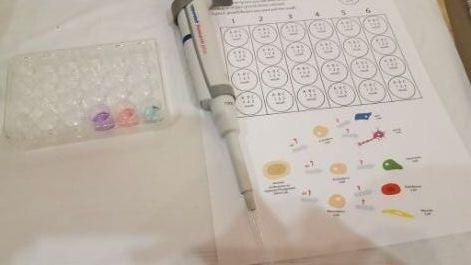The Wisconsin Institute for Discovery hosted a panel of University of Wisconsin stem cell researchers to discuss the future of their research Tuesday.
The scientists briefly discussed their work before moving into what the future of stem cell science may look like. Their main hopes centered around moving from a microscopic to a macroscopic scale, from cells to tissues and organs, as well as applying stem cell discoveries to clinical science.
UW Pathology professor Lynn Allen-Hoffmann discussed increasing the scale of projects, moving into the future.
“What we end up really wanting is a higher order structure … We want to make a functional, visual unit, part of the nervous system to convey messages to the brain … There’s a theme here, between the three of us, that I think is what’s going to drive this whole field for the next 20 years, and that is the recreation of anatomically and physiologically functional tissue,” Allen-Hoffmann said.
The next step after moving to macroscopic projects would inevitably be clinical trials and applications, Allen-Hoffmann said.
Pediatric ophthalmologist David Gamm discussed working with the biotechnology and bioengineering departments in hopes of bringing research to commercial spheres. He agreed with Allen-Hoffmann when he said that part of their work should be to help integrate the different facets of UW research — to take the cells, or “spare parts” they have individually and work together with other scientists to help patients in need.
As a pediatric ophthalmologist, Gamm works with patients going blind from Parkinson’s disease and similar ocular-degenerative conditions and would love to start developing clinically-available technologies to aid those with vision problems.
“We have to look into patterns,” Gamm said. “How are we going to pattern these cells, how are we going to mature them to prepare the diseased tissue to accept these new cells? So therein lies our increasingly intense interactions with, say, engineering. So nanotechnology.”
Gamm praised UW’s stem cell engineers, who specialize in the application of stem cells to clinical problems. He also praised UW for being one of the first universities to recognize the importance of a connection between stem cell researchers and technology developers.
UW regenerative biology professor David Vereide looked at the potential applications of stem cell technology to the field of toxicology.
“The vast majority of chemicals that we encounter on a daily basis are not well tested, and the reason for that is it costs about a million bucks to thoroughly test a chemical,” Vereide said.
Vereide discussed the detriments of animal testing, stating that only about 60 percent of results found in testing with a mouse can be applied to a human. He hopes that stem cell technology can help develop more applicable and cheaper pharmacological tests, to create a better understanding of their safety or their toxicological potential.
The panel also discussed the challenges moving forward with stem cell research. One challenge listed by Allen-Hoffmann was the process of clinical assessment and approval. While Gamm mentioned the importance of safety measures put in place by the Food and Drug Administration and similar agencies to prevent under-tested and potentially dangerous drugs from making it onto the market, Allen-Hoffmann discussed the potential difficulties that come with such measures.
“This testing takes a long time, and it’s very expensive,” Allen-Hoffmann said.
Allen-Hoffmann compared the clinical testing process in the U.S. to Japan, where instead of at least three different phases of study, a medicine must only go through one before being commercialized. After making it into the market, the company has seven years to prove the efficacy of their product, and if it isn’t efficacious, they have to take it off the market.
According to Allen-Hoffmann, a process like this could have the potential to help more patients faster.


